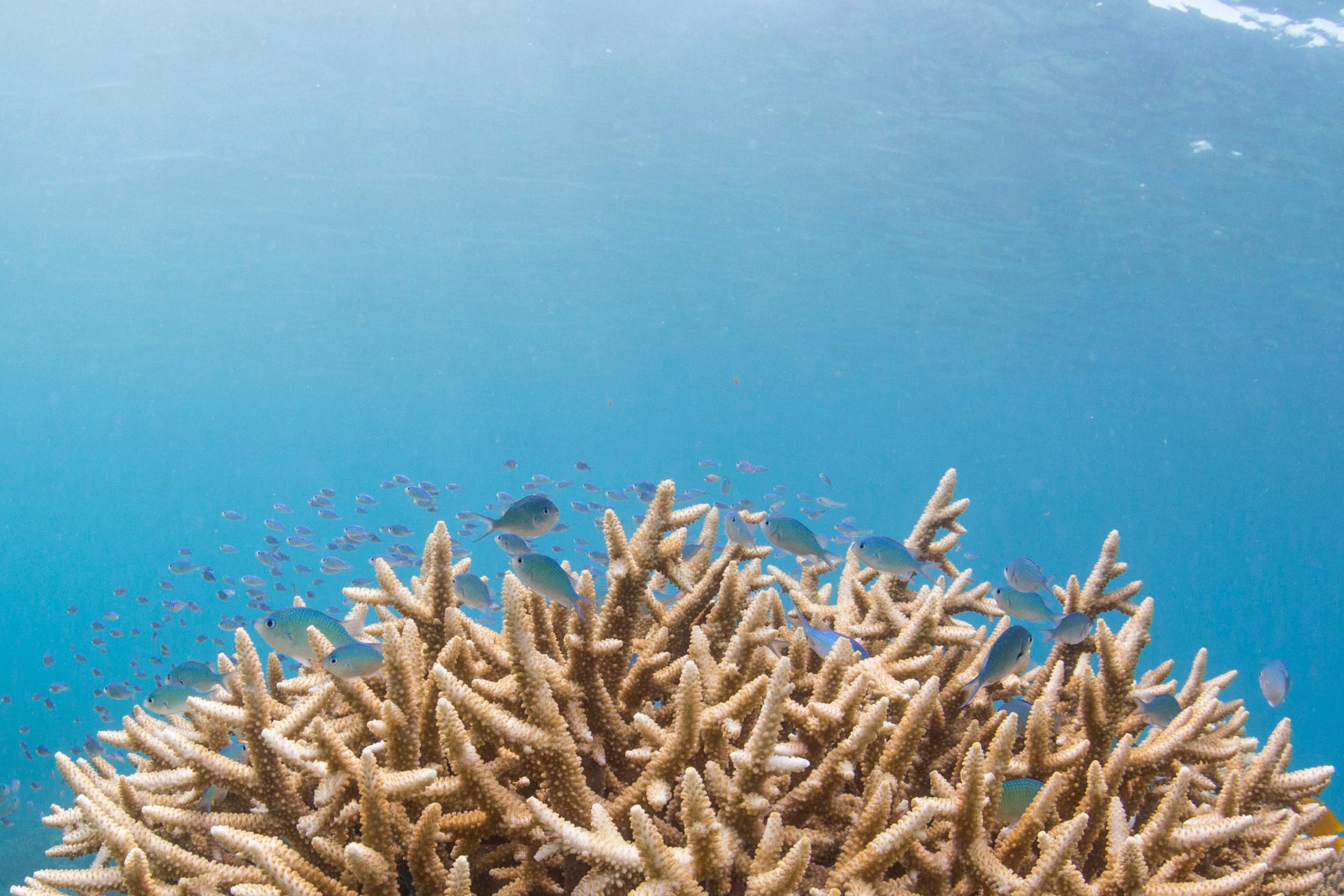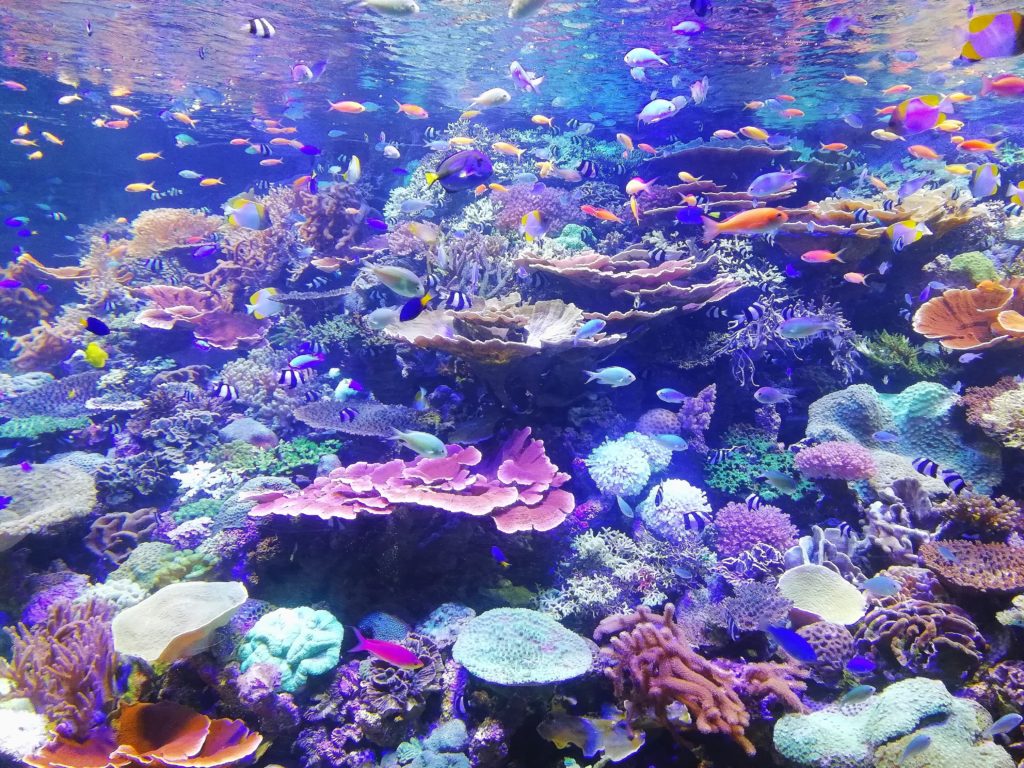What You Need to Know About Coral Bleaching (And What You Can Do About It)

Every year, tourists flock to places like Australia with hopes of seeing the Great Barrier Reef. Many of them go boating around the area to get a glimpse of wildlife just under the surface, while others take part in scuba diving around the area to get the full experience of this natural beauty. Unfortunately, what was once an amazing escape from shore life has now become a shell of its former self. Vibrant corals have become a dull white, and the fish inhabiting these reefs have long become homeless due to the harsh act of coral bleaching.
What is Coral Bleaching?
To understand the concept of bleaching, it is important to acknowledge the reason why corals have color in the first place. These species are covered in small symbiotic algae called zooxanthellae, which provide color, protection, and energy to the coral. Normally, these two live together in peace. But if corals become stressed, they will expel the algae from their surface and prevent it from reattaching while under negative conditions. Once detached, the coral will turn white and sickly, inspiring the name “coral bleaching”.
What Causes Coral Bleaching?
There are many reasons why corals struggle in their living conditions, but the biggest cause is climate change. Oceans take in roughly 93% of the heat given off by global warming. When the temperature of the water gets too hot, the coral living in these areas rejects the algae. Climate change also induces issues concerning the amount of light that the coral is exposed to, and the amount of nutrients reaching them.
Humans also directly contribute to bleaching through overfishing, coastal development, pollution, and tourism.
• Coastal development causes heavy erosion, which clouds the water and keeps the zooxanthellae from absorbing the sunlight it needs to survive.
• Overfishing allows invasive species like seaweed to grow exponentially, which blocks light and nutrients.
• Pollution can change the pH of the water, making it harder for calcium carbonate to form. This prevents corals from building their skeletons.
• Divers often destroy corals by stepping on them, while others break off pieces of the coral as “souvenirs.”
• Cruise ships impact the ecosystem surrounding coral reefs and block the light necessary for photosynthesis.
How Does this Impact Our Planet?
Coral reefs take up less than 1% of the ocean’s floor, but they provide habitats and predatory protection for over a quarter of marine life. Unfortunately, between 2014 and 2017, over 75% of the world’s reefs suffered bleaching, and roughly 30% of those reefs ended up dying. If the corals continue to die at such a high rate, hundreds of species could become extinct. These areas are also the highest for biodiversity, which stands to suffer if more corals die off.

How Does This Affect Humans?
In addition to being tourist attractions, coral reefs are also the source of enough resources and food for over 500 million people across the globe. Their existence affects the lifestyles, food security, and safety of hundreds of thousands of people without them even realizing it. For those living in coastal communities, these reefs are responsible for taking the hits from heavy waves, neutralizing tropical storms to a certain extent in order to keep those communities safe. If that weren’t enough, over 50% of cancer drug research currently ongoing involves marine life sustained by reefs.
Solutionists Protecting Our Reefs & Oceans
While it is possible for a bleached coral to heal, it is extremely rare and takes decades to achieve. Most die, and once coral is gone, there’s no coming back. Thankfully, many organizations are working to create solutions that protect coral reefs and our oceans.
The Coral Reef Alliance (CORAL) is a non-profit organization dedicated to restoring the world’s coral reefs. They work with communities to reduce threats to coral species. They also collaborate with scientists to research the impacts of climate change on the reefs and their adaptation to the changing world. You can donate to their cause here.
The Surfrider Foundation is a small organization that works in local chapters to advocate and fight for our ocean’s continued survival. They’re involved with issues such as plastic pollution, coastal preservation, and clean water. To donate to this cause, click here.
The Coral Gardeners help restore coral reefs through maintaining restoration nurseries. They start with broken pieces of coral, attach them to bamboo stems, and let them grow for a month before replanting them into a reef. By doing this, they are giving direct individual attention to each and every coral and ensuring the continued existence of the reefs piece by piece.
What You Can Do to Help
• Avoid using herbicides and pesticides while gardening or for home use, as they contribute to pollution and can prevent corals from being able to reproduce
• Recycle to decrease pollution and the number of landfills across the planet
• Use water sparingly! Take shorter showers, and don’t leave the water running when you brush your teeth or wash dishes. This reduces the amount of wastewater entering the ocean.
And last but not least,
• Adopt a coral! You can pay roughly $29.50 to adopt a coral at the Coral Gardeners‘ nurseries. You’ll get to name it, you’ll receive an adoption card with information, and your donation will help coral reefs slowly make their return to the oceans. Each person in this organization is passionate about preserving the reefs, and they take care of each individual coral that is adopted in their underwater nurseries.
If we all come together one at a time, we can create a better future for the world’s oceans, and humanity too.


Leave a Reply